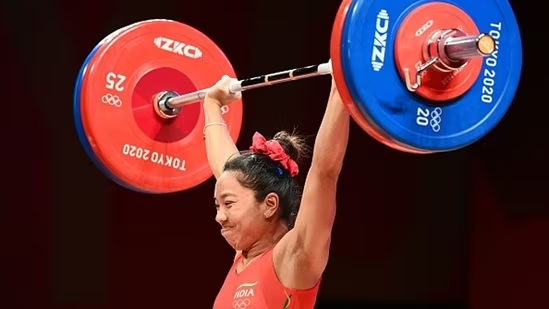Olympics: Welcome to the Redeem Team
Hasely Crawford, one of 11 children, was born in San Fernando, Trinidad, in 1950. He began sprinting when he was 17, won a surprise bronze in the Commonwealth Games in 1970, and quite astonishingly, managed to make the 100m final at the 1972 Munich Olympics — the one with the massacre and Mark Spitz.  PREMIUM
PREMIUM
But in the final that evening, the biggest race of his life, Crawford pulled a hamstring 20m from the starting blocks, and hobbled for another 30, watching through pain and disappointment as Russia’s Valeriy Borzov dashed past the tape.
It isn’t so bad, people consoled him, no one from the Caribbean has ever won the 100m anyway.
Instead of being mollified or disheartened by those words and that factoid, Crawford decided to use them as inspiration. He chose to fight back.
Also Read | How Mirabai Chanu lifted India, Manipur
Four years later, at Montreal 1976 — barely a week before his tiny island nation of Trinidad &Tobago became a republic — Hasely Crawford snuck into the 100m final again. This time, he dashed past the 20m mark, started pulling away at 40m, was virtually unstoppable by 80m, and went on to become the first man from any of the Caribbean islands to win an Olympic 100m gold. As if for good measure, Don Quarrie from Jamaica won the 200m later that week.
If the Olympics are meant to be more about the struggle than the triumph, then the stories that stand out are not those of dominance, but those of redemption.
Redemption of the kind that Mirabai Chanu experienced in Tokyo on an extraordinary Saturday morning for Indian sport.
If you don’t remember exactly what happened in the 48kg women’s weightlifting competition at the Rio Olympics four years ago, Chanu’s heartbreak that day cannot be overstated. In her six attempts across the two techniques, she managed only one lift, that too barely, when she snatched 84kg on her second attempt (she failed on her first at that weight, and on her third attempt at 86kg). In the clean and jerk, she could not get the barbell up even once – the 104kg got away from her, and the two attempts at 106kg seemed like desperate stabs at more than she could handle.
It was the kind of performance that can break athletes, give them nightmares, scar them for life; put them off the gym, off training sessions, and induce a mortal fear of the spotlight.
Chanu’s response over the past five years is what separates champions from the rest. The same clean and jerk in which she could not get the barbell up at Rio first became her strength, and then her calling card. She came to be known as the one you had to somehow pull away from in the snatch, because she’s going to get you in the second leg of the competition. The clean and jerk world record (119kg) now stands in her name.
Also Read | Tokyo 2020: Mirabai Chanu - silver medal, golden girl
But despite her training, her medals, and her records, the bogey of Rio was always going to hang over her until the next Olympics. The longer wait for Tokyo 2020, and the possibility that the Games may not happen at all, must have been harder for Chanu than for anyone else in the Indian contingent.
On Saturday, she looked centred and confident. The spotlight did not bother her, nor did the pressure. Instead, there was a little bow to the barbell as she approached it, then a smooth lift, a slow but steady raise, a monkish stillness, and a smile of redemption. She repeated that routine four times, until the silver was secure.
And the funny thing about redemption is that Chanu might now feel what she went through in Rio was worth it.
Just like the legend of Hasely Crawford connects with Chanu’s story, her turnaround has a message for another athlete who had an eye on a medal in the 10m air pistol event on Saturday. Shooter Saurabh Chaudhary, 19, and at his first Olympics, must be crestfallen by his implosion in the final after qualifying in first position. But he should take heart – who knows, this may be the first note of another redemption song.
Experience unrestricted digital access with HT Premium
Explore amazing offers on HT + Economist Start 14 Days Free Trial Already Subscribed? Sign In
Disclaimer: The copyright of this article belongs to the original author. Reposting this article is solely for the purpose of information dissemination and does not constitute any investment advice. If there is any infringement, please contact us immediately. We will make corrections or deletions as necessary. Thank you.







